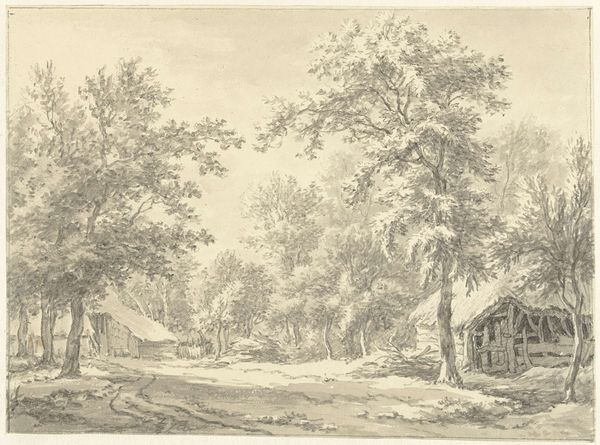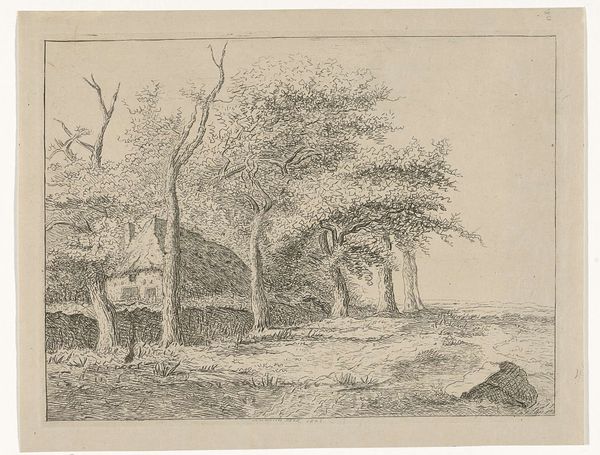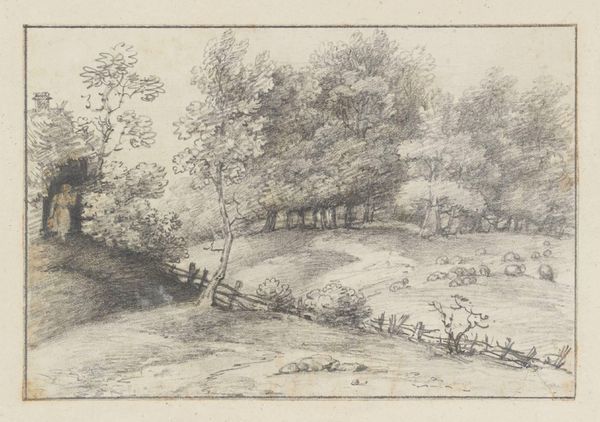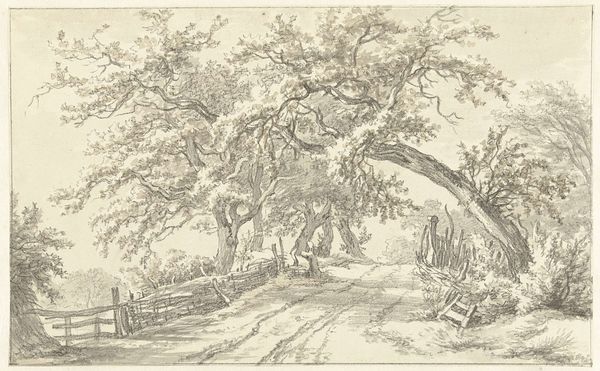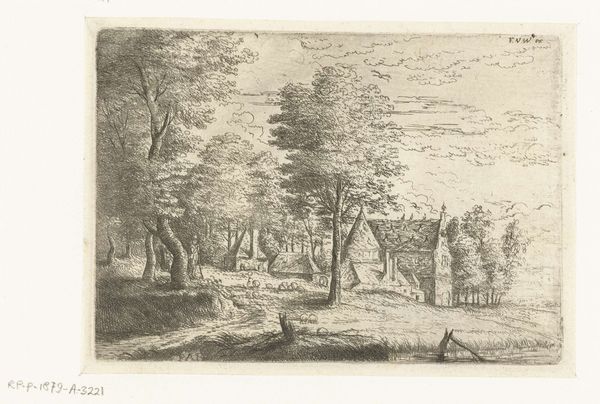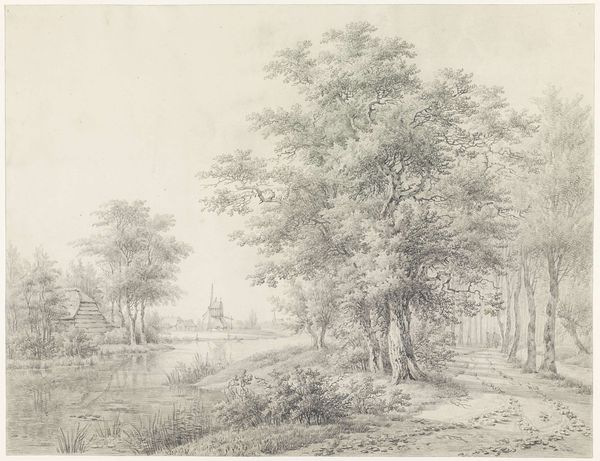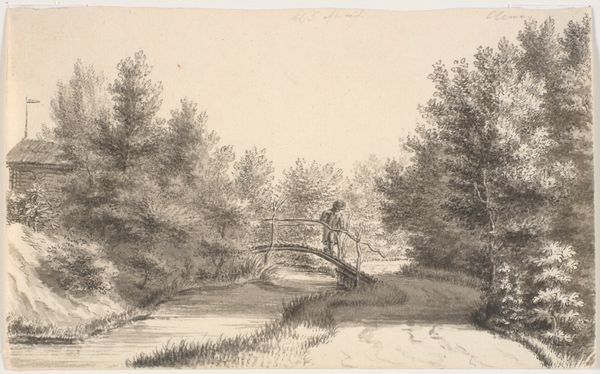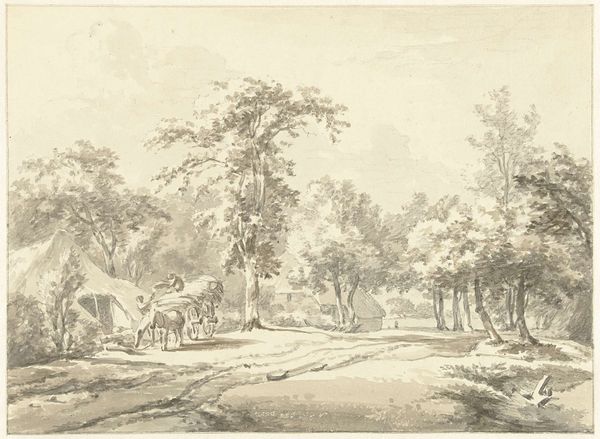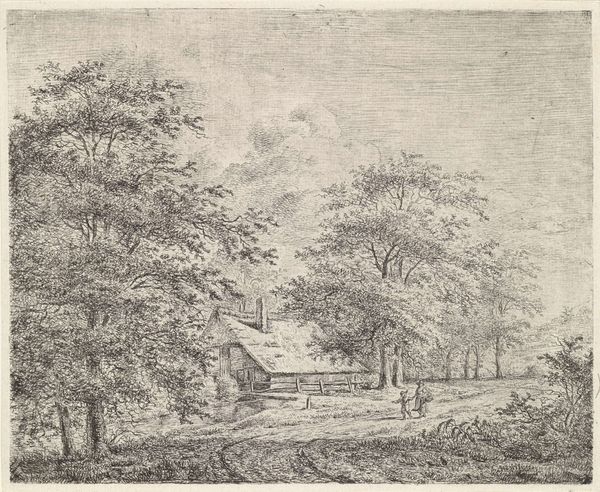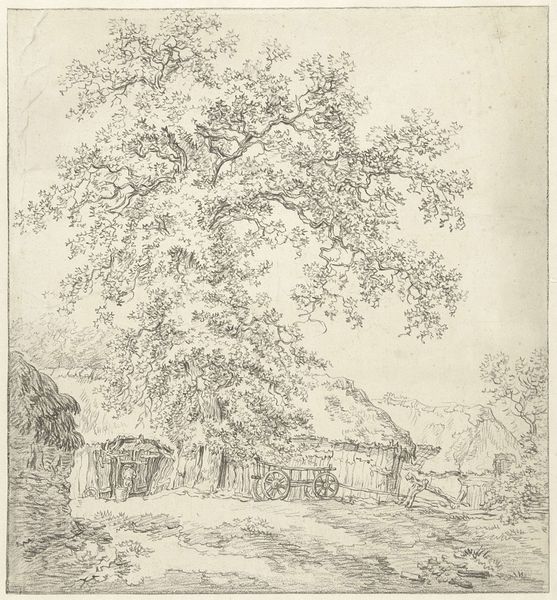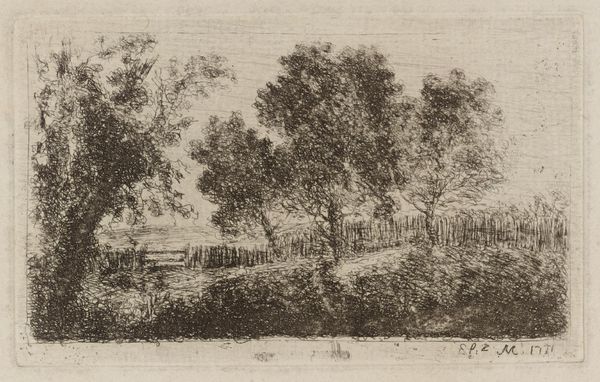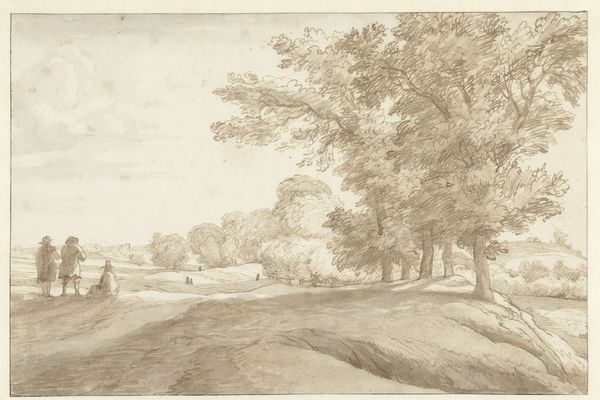
drawing, pencil, graphite
#
drawing
#
pencil sketch
#
landscape
#
pencil
#
graphite
#
realism
Dimensions: height 228 mm, width 366 mm
Copyright: Rijks Museum: Open Domain
Curator: Egbert van Drielst’s graphite and pencil drawing, titled "Op het Hoogeveen in Drenthe", dating roughly between 1755 and 1818, offers a fascinating look into the rural Dutch landscape. What are your initial thoughts on this work? Editor: It’s surprisingly delicate. The composition feels balanced and tranquil, despite the somewhat muted palette. The layering of the graphite gives a sense of depth, like looking through a soft mist. Curator: Indeed. Van Drielst's choice of graphite is telling. In that era, sketching was tied to printmaking – designs had to translate into linear, reproducible formats for mass consumption. This landscape points to a burgeoning commercial print culture that circulated visions of an idealized countryside. Editor: You raise an important point about reproducibility and consumption. But consider the artist's technique: look at the textures created purely through the hatching and cross-hatching. There’s a subtle but distinct visual language being developed there. Note, for instance, how the fence's rhythmic lines intersect with the organic chaos of the trees’ foliage, establishing a pictorial space, a push and pull. Curator: While I appreciate the formal relationships you point out, I can't ignore the socio-economic context. These landscape drawings were not merely aesthetic exercises; they were often commissioned by landowners and merchants eager to promote the idealized agrarian image for marketing and tourism purposes. We need to consider who controlled access to the depicted land and the social narrative conveyed through these images. The drawing flattens, idealizes, making the social hierarchies implicit. Editor: Certainly, acknowledging patronage and intention broadens our understanding, but the focus on line, shade, and composition also directs attention to a unique viewing experience. It presents nature filtered through the sensibility of a particular artistic intelligence. And, as an artifact of graphite and paper, how these materials allow such subtleties. Curator: A subtle manipulation, indeed! These images reinforced notions of land ownership and power at a time of social upheaval and shifting agricultural practices in the Netherlands. But yes, what persists in the Rijksmuseum and continues to invite questions is precisely how artists working with simple tools contributed to complex visual regimes that reflected then-current interests in social and economic transformation. Editor: A fitting reminder to embrace the multiple perspectives a single artwork can yield, from formal nuance to its cultural backdrop.
Comments
No comments
Be the first to comment and join the conversation on the ultimate creative platform.
